Saturday, March 8, 2014
Garden Landscape Adjusting The pH Level In Your Soil Is The Key To Success
To have a beautiful garden landscape, the pH levels in your soil are key to the success or failure of your garden project. You dont want to spend hundreds or even thousands of dollars on garden landscape materials, only to fail because the shrubs you planted cant get the proper nutrients. To know where your gardens pH levels need to be, you first have to know where the pH levels currently are. The ideal pH range is between 6.5 to 7.0. When changing the pH of your garden soil, the first thing you need to do is test your soil. You can test the pH of your garden soil at home using a do-it-yourself pH kit or with a portable soil probe/pH meter. Both of these can be bought at your local garden shop. You can also send a pH sample to a lab for a more in-depth analysis. Sending your pH sample to a private lab will give you the most comprehensive analysis of the pH levels, although its more expensive than sending it to your local extension service.
The pH in your garden soil can be balanced fairly quickly if they are not too far out of the ideal pH range of 6.5 to 7.0. Make adjustments by applying soil amendments such as dolomite limestone or gypsum. The best way to adjust pH levels in your garden project is to incorporate compost and mulch. There are dozens of materials that you can compost, and compost can be bought fairly inexpensively at your local landscaping supply. A ton of compost is usually less than $30.00. Adding organic matter to the soil tends to make both acid and alkaline pH levels more neutral, while applying chemical fertilizers makes the pH level of your soil more acidic.
If the pH in your soil is too acidic, you need to add alkaline material which means you must raise the current pH level. to raise the pH level of your soil you must add lime. The most common "liming" material is ground limestone. Ground limestone breaks down slowly, but it does not burn plants like "quick lime" does. Apply it to the garden and lawn in the fall to allow time for it to act on soil pH before the next growing season. A rule of thumb for slightly acid soils is to apply 5 pounds of lime per 100 square feet to raise the pH by one point.
Applying a thin layer of wood ash will also raise soil pH in your garden project. Wood ash contains up to 70 percent calcium carbonate, as well as potassium, phosphorus, and many trace elements. Only a thin layer is needed to raise the pH, because it is powdery, wood ash is a fast-acting liming material. Be careful, a little goes a long way. Limit your application to 2 pounds per 100 square feet and only apply it every other year in a particular area.
If your pH level is to high, you need to add a source of acid. Options include pine needles, shredded leaves, sulfur, sawdust and peat moss. Pine needles are a good source of acid and mulch. Peat moss with a pH of 3.0 is often recommended as a soil additive. Before you use it though, consider the other options, because peat moss is nutrient-poor, expensive, and its a nonrenewable resource.
Get more garden landscape design tips and tricks at Garden Landscape Design. Hundreds of do-it-yourself videos to walk you through step-by-step in creating that beautiful garden landscape design.Friday, March 7, 2014
Architects discover Public Realm

The news that Architects Stanton Williams have won the competition to design the new Kings Cross Square, was met with a resounding, "Meh!", at my house.
http://www.bdonline.co.uk/story.asp?sectioncode=426&storycode=3162081&channel=783&c=1
While Im generally pleased to see public realm projects enjoying a higher public profile, Im less impressed that so many of them are going to architectural practices. Just off the top of my head, some other notable examples of this would be the Dover seafront which went to Tonkin Liu, and the Maidstone Public Realm that went to Letts Wheeler - both Architects and both pretty high profile competitions.
While Im not necessarily suggesting that Architects are incapable of designing public realm (I think most good designers can probably turn their hand to anything). It does beg the question that if Architects are designing our public spaces, then what do Landscape Architects do? Having spent 5 years at University, followed by another 2 years studying in practice how to design external spaces, Im a little concerned by this development. I guess that if this were to become the norm, then thats the point when I pack up my clicky pencils and do something else. Masterchef perhaps?!?
A big part of my dislike of the term landscaping, derives from the perception that Landscape Architects are only there to specify areas of grass and shrubs. Im still haunted by the experienced developer who told me that he didnt need a Landscape Architect, as he had some guys who could put down grass and plant hedges. Weirdly this perception seems to be on the increase, perhaps due to the spread of the term urban design. Until fairly recently urban design was generally agreed to be part of the Landscape Architects remit (the pedant in me wants to say that urban design is a process, but I think that this particular battle has been lost), but with the rise of professionals who call themselves "urban designers", urban and hard landscape work seems to be be moving away from landscape architects.
In my experience, most Architects like to have a bit of a crack at designing the externals, but very rarely do they seem to understand either the fundamentals or the technicalities of designing landscape. The typical approach is to draw up the bits of the site they want for the important stuff like buildings and roads first, before filling the remaining landscape with some fancy shapes and squiggles. After which theyll usually try and post-rationalise what the landscape will be used for. If youre really unlucky, they may just want you to detail and specify their designs...


I guess you have to look at what the Architects that are getting this work are doing, that Landscape Architects arent. Looking at the websites of the ones Ive just mentioned, what struck me (other than how few public realm projects theyve actually put on the ground) was the quality of the cgis and renders theyve used to illustrate the projects. To be honest, Ive not seen many Landscape Architects, producing images of this quality. I think that Architects also have a little more cache with clients, and suspect that the higher turnovers of buildings also gives them a bit of an advantage on PQQs.
Its another example of why Landscape Architects need to work harder at marketing themselves, and illustrating what they can do.
Meh!
Thursday, March 6, 2014
War Memorial Park Coventry

Quite aside from any work that Im involved in, I think its worth drawing to peoples attention to. Id guess that outside of Coventry (maybe even within Coventry), not many people will be familiar with either the Park or the Memorial. Built in 1927 and designed by local architect, T.F. Tinker, the Memorial comemorates the 2,587 local men who died during the First World War and is set in a mature parkland of sombre, copper beaches and formal gardens. The photos below were taken on a bright, March morning as I popped down to take a few measurements. While I always enjoy spending time in the Park, I thought the Memorial looked particularly stunning in the harsh winter light. Standing 27m high, the Memorial is most obviously influenced by the deco style of the time, but it also has elements of more gothic architecture, with its prominant, buttressed corners - in short its a real one off. I have to confess to being fascinated by it, and would recommend that anyone with an architectural interest, checks it out. I hope my snaps do it justice.






Small Backyard Designs

Small Backyard Designs
Houseplants for Colorful Foliage Winter Blooms
Whether it is cold and snowy outside or a beautiful summer day houseplants are always here to stay. Adding houseplants to your indoor space supplies interesting foliage and colorful blooms to a room and also adds oxygen and humidity for good health. In a previous post I introduced several user friendly houseplants that are hardy and low maintenance. I have come across a few new additions which I would like to share!.jpg) |
| Aglaonema (Chinese Evergreen) Lighting: Low to Moderate (More Light for Red Variegated Varieties) Water & Soil: Keep Moderately Moist (Water in Center of Plant) |
 |
| Crassula argentea (Jade Plant) Lighting: Bright Southern or Western Exposure Water & Soil: Moderately Dry Well Drained Soil Jade Plant has always been a favorite of mine. I started growing two Jade plants about 25 years ago which have now been propagated into four. I had the rare surprise of seeing my two mature Jades bloom for the first time in the past several years. I can only remember them in bloom about three or four times since I have had them and when they bloom it goes on for months. I think what sparked the beautiful blooms was a combination of both plants being very root bound, the dose of cactus juice I had given them, and the night time temperatures of the windowsill they are located on suddenly dropping, thus signaling the arrival of winter. I have read that Jade requires a dramatic temperature change to encourage blooming but to get them to bloom is a difficult feat. This rarity is truly a joyous surprise that I am glad to be able to share! |
 |
| Crassula argentea (Jade Plant) in Flower |
 |
| Amaryllis Lighting: Bright Light Water & Soil: Moderately Moist Rich Humus Soil |
 |
| Schlumbergera bridesii (Christmas Cactus) |
Water & Soil: Moderately Moist (Requires a Well Drained Soil)
Christmas Cactus is another all time favorite for winter flowering. In reality a succulent, there are two varieties for bloom time, one near Thanksgiving (Thanksgiving Cactus) and one later near Christmas (Christmas Cactus). Water infrequently until November then increase the watering to encourage blooms. After blooming withhold watering once again, allowing to dry out (but not completely), until new growth appears. As new growth appears in spring apply a weak strength fertilizer every 2-3 weeks.
.jpg) |
| Haworthia Attenuata (Zebra Cactus) |
 |
| Dracaena sanderana (Lucky Bamboo) |
 |
| Zamioculcas zamiifolia Emerald Fronds (ZZ Plant) Light: Bright Diffused -Low Light Soil & Water: Well-Drained Soil, Water Weekly Since my last houseplant post my Zamioculcas, commonly known as "ZZ Plant", has grown into a three foot high focal piece. It thrives in indirect light from a sky light and requires minimal care. ZZ Plants do not require much fertilization and leaf polish should not be used on its attractive glossy leaves. To maintain the plant all I do is water weekly to keep the soil from completely drying out and keep the leaves cleaned with a moist cloth. Some sources will say to allow the plant to become completely dry before watering but I find that weekly watering encourages much more new growth. Houseplants add life to the indoors and these selections have proven to be relatively low maintenance and easy to care for in your home. For indoor blooms and attractive colorful foliage add some of these beautiful houseplants to your space and bring years of enjoyment to your indoor garden! You may also be interested in this article on indoor container gardening. As Always...Happy Gardening! Author: Lee@A Guide To Northeastern Gardening, Copyright 2014. All rights reserved. |
.jpg)
Wednesday, March 5, 2014
garden designs pictures
The extreme problems in looking to visualize what exactly your panorama could seem like with some offered changes could be helped a number of by analyzing landscaping pictures from properties of a comparable design yet different landscaping styles. A lot of do it yourself magazines, and also gardening along with landscaping publications, could have pictures you can use for your own landscaping ideas.
 |
| garden designs pictures |
Several drawbacks to be able to trying to employ landscaping pictures as a creation and design and style aid is basically that you must very carefully take into account important differences involving the situation which of the house getting photographed. These kind of pictures are often taken beneath sunny azure skies with everything else in full flowers. But which house may possibly look different in the winter. Additionally, it can be in a totally different environment than the one you have, and often your plants the thing is in the landscaping pictures might not grow with your climate.
That is why it is important that anyone be able to determine the various plant life, shrubs, along with flowers you will note in these landscaping pictures. Furthermore beware of styles centering close to a patio or even porch that you can not have place to build. And ensure that you arent sowing things that can grow to be way too large on your yard.
Getting a house in which closely is similar to your is usually a time consuming job. Really, inside your do it is usually to sit down using a bunch of these kind of publications and appearance through a lot of landscaping pictures until you discover ones that appear to be similar to the house. Remember, in which design seems fantastic inside a landscaping picture of the huge residence may not appear so great crammed close to a smaller home.
You will notice that most of the landscaping pictures you look from also include photos of private pools and porches. Landscaping must be developed around these types of fixture, and when you do not have a single, that format will never seem right in the yard. Landscaping pictures can provide some great ideas, only if they residence and garden resembles the one you have fairly carefully.
If you are employing some kind of landscaping computer software, you can print landscaping pictures of your style once you have one thing you like. Having these to the garden or landscaping offer shop will make sure that youve enough resources and crops to complete the particular project as if you want. They could also be able to make available suggestions to increase your design.
 |
| garden designs pictures for homes |
 |
| garden designs pictures ideas |
 |
| garden designs pictures for the front garden |
landscaping ideas designs
 | |
|
Landscape design and style is based on the two the built-in master landscaping planning and also the specific yard design of landscaping elements. Collecting landscaping design and types of conditions are very important issues before help make agreement using contractors.
Precisely what are all the vital conditions regarding Landscapers Design?
Straightforwardness - That is common regulations for planning and artwork task. In case you using the basic elements just like selecting number of colors along with plants along with other lighting along with decorations could make it organic.
Lines -- To Select the road Patten, you should set up your plant life and yard design are important. This is the principal flow of the garden designs to implement.
Harmony - Evening out part is essential for landscapers, celebrate beautiful what to see. There are 2 types of account balances are available.
Shaped - Backyard design component can complement equal places.Asymmetrical -- This is a combination of similar consider one position and different aspect on yet another side.Amount - If you are analyzing your current landscaping design, its a good quality to prepare your garden design and style element in comparison to its the variety of dimensions, variety of shades and various types. With out planning your own gardening services will not appear beautiful. Consequently planning could be the major role associated with landscaping developing.
Tips for your own landscaping equipment and lighting
Landscapers always has its tools and equipment points so it is an easy task to remodeling your property. Landscaping lighting that may demonstrate a beautiful physical appearance at night periods. The lights and fame appearance coloration can appear within the eyes regarding passersby and visitors. Lighting features a variety of colours and designs. You ought to choose the right colour and add some value of residence property. There are lots of types of landscaping design lighting accessible. Outdoor kind is a Malibu lighting, it displays the errant effect. Its the good quality associated with lighting any walkway. Down-lighting is the one other best method regarding lighting up your house. Moonlighting is used with regard to safety and security goal.
Antony Gormley 6 Times
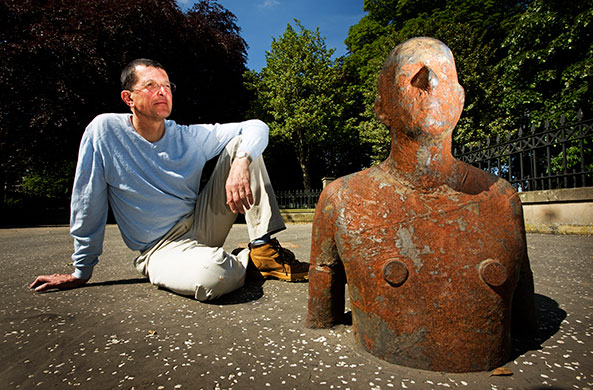
In the far mists of time when I was studying for my art GSCE, a friend and classmate called Jude, made an amazing discovery. Following a suggestion from his Sister, Jude stuck cut-out newspaper headlines (stuff about war and pollution and Africa), around his slightly dodgy, 2B pencil and poster-paint representations of cow bones . What he hadn’t expected was the rapturous response he received from our Art Teacher, Mrs. Warwick, who thought this was the greatest artistical innovation, since middle-class Westerners discovered batik.
Following this success, Jude prepared an artist study, with of a painting of a desert and some droopy clocks(inspired by Salvador Dali), surrounded by newspaper headlines about scandal. He then went on to produce his major project, which featured a gouache seabed, with pencilled fish bones and aquatic skeletons, surrounded by headlines about, oh, oil being bad or something. For his piece de resistance, Jude’s final art exam... actually I can’t remember, but I’m dam sure it had bones and newspaper headlines.
I give this story, because it seems to me that Antony Gormley has followed a similar career path in the grown-up world of art, as my mate Jude did at Judgemeadow Community College. Only instead of bones and newspaper headlines, Gormley has figures. Also like Jude, Gormley seems to enjoy most success, when he sticks most closely to this formula (i.e. figures on Crosby Sands = good, random plinth in Trafalgar Square=bad).
While it may appear that I’m being snide about Antony Gormley’s work, it is with some affection. For me he’s like the Abba of the sculpture world; you know it’s cheesy, but you can’t help liking the Angel of the North (or SOS).
Hence I thought I’d share some recent Guardian photographs of ‘6 times’, Gormley’s new installation of 6 figures leading from the Scottish National Gallery of Modern Art to Edinburgh’s Leith Docks.
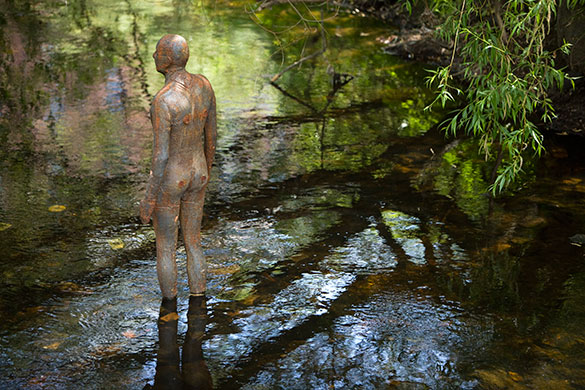
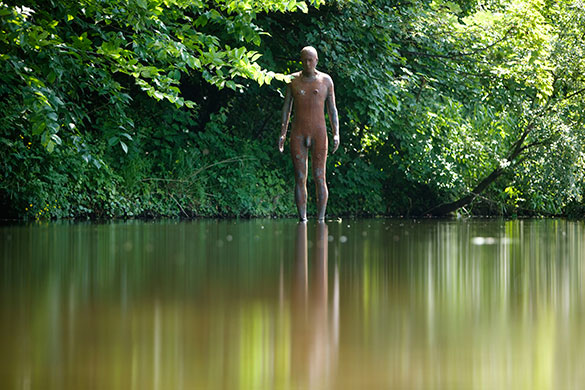
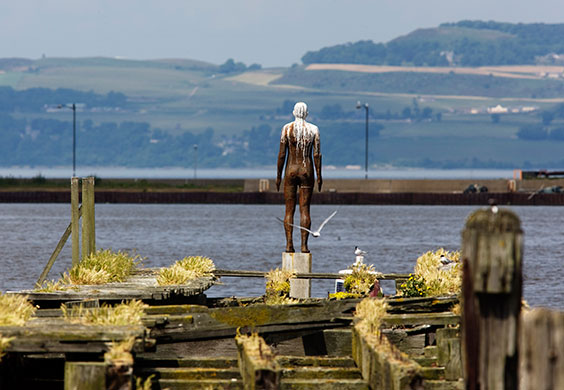
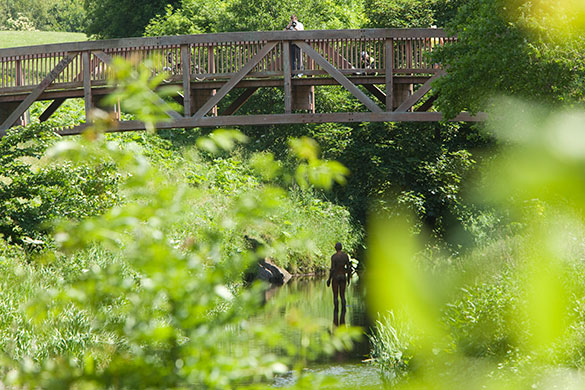
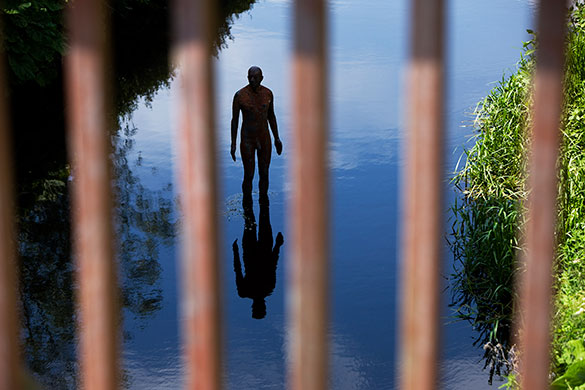
Tuesday, March 4, 2014
Winter and Spring 2013 Talks
February 6, 7:00pm Annapolis Horticulture Society, Annapolis, Maryland. St. Annes Parish Hall. 199 Duke of Gloucester Street, Annapolis, MD 21401. SOLD OUT.
February 13, 10:00am, 2013, Winter Symposium "A Natural Love Affair," The Lewis Ginter Botanical Garden Richmond, Virginia. Massey Conference Center, Lewis Ginter Botanical Garden. Michael Dirr, Alan Weakly, and Holly Schimizu also speaking at this event. SOLD OUT. Email registrar to be added to the waiting list.
The original Secret Garden
Frances Hodgson Burnett tried to find her way into the garden at Great Maytham Hall when she rented it 112 years ago. It was then a 1760s Georgian manor house. Whilst exploring the badly neglected garden, a robin perched on a nearby plum tree showed Frances the way to a rusty door knob overgrown by ivy. It was the door in the garden wall and this inspired her to write The Secret Garden when she returned to America in 1915.











The Good Earth Garden Center Landscape Design Yard Maintenance
The Good Earth Garden Center, Landscape Design, Yard Maintenance
 This video explains what The Good Earth Garden Center provides to its customers in services and support. We are a full service garden center in ...
This video explains what The Good Earth Garden Center provides to its customers in services and support. We are a full service garden center in ...Monday, March 3, 2014
3 Practical Home Landscaping Design Ideas
 Whenever youre looking to renovate, update, or completely reDesign the current Home environment, there are literally thousands upon thousands of different possibilities and options available to you.
Whenever youre looking to renovate, update, or completely reDesign the current Home environment, there are literally thousands upon thousands of different possibilities and options available to you.landscape of your
When you consider the various tools, materials, Design themes, and any potential obstacles (trees, rocks, streams, etc.) it can seem a bit daunting to not only come up with, but also complete, a Landscaping project on your own. Here are a few Practical Ideas you can utilize when youve decided to undertake a landscape Design renovation.
1. Have A Clear Goal In Mind
The most important piece to getting your project done correctly, on time, and within your budget is to first and foremost have a clear plan and set of goals in mind. Are you looking for a complete overhaul, or are you only looking to make minor changes? What sort of Design themes do you prefer and do they fit the scheme and atmosphere of your Home architecture and yard? You should look to layout some blue prints of what youd like to do for bigger projects.
2. What Kind Of Materials or Tools Will You Need
The next piece to completing a Landscaping project properly is getting the right tools and materials to get the job done right. If you are planning a garden, what sort of flowers, vegetables, or plants will you be looking to tend? Do you have enough space for irrigation systems, automatic sprinklers, fencing, and other Design features if youre heading that route? If your project is large will there be enough space for large machinery? Knowing what tools and materials youll need is critical to completing any landscape Design properly.
3. Contact Your Local Landscaping Experts
What most of us will see is that Landscaping Design projects, no matter the size, can be quite large undertakings to complete on your own. The most important thing you can do at that point is to look towards the guidance of a professional landscape contractor in your local area. Be sure to ask for proof of their insurance and for some references, also how long they have been in your area and if they can provide a free project estimate.
No matter which route you choose when looking to complete your landscape project, you have a multitude of different options available to you. Be sure to conduct your own research into materials, tools, and any potential companies you may be considering to hire. With even just a little bit of foresight and planning you can ensure that your new Home landscape Design goes off without a hitch.
New Planting Aimed at Restoring the American Chestnut Tree

Once the king of the eastern forests, the American Chestnut tree was devastated by blight early in the twentieth century. The blight was a result of importing Asian chestnut species to America. The native trees had no immunity to the foreign blight. Now the only chestnuts that remain in the wild are small seedlings that die when they reach a certain size.

See more about the planting here.
The key to maintaining low Fri
You can easily manage front yard landscaping from a professional gardener in your area or you can do it yourself. If you can maintain front yard landscaping done some work, beautiful look will last all year. If you do not use the professional landscaping the front yard, you should tell him that your ultimate goal has a farm, which requires very littleMaintenance.
If you have less grass in your backyard landscaping then you will cut out a lot of maintenance. mowing the lawn, a lot of time and energy as the grass kept to a minimum is a great way to save on labor. You can talk to experts on landscape alternatives that you use for your garden looks great with a small lawn.
Some propose Tampa Landscapers, cover with a floor in many situations.
A ground cover is best viewed in a bed and / or treesor shrubs. Not only reduces the estimation of cut grass, should be very useful (on a slope or in the shade) and looks very attractive.
Most varieties of ground cover tend to spread. So you need to maintain some sort of fence around them to crawl around the yard.
Watering the garden can be a great effort as well.
This is why many people are equipped with automatic sprinkler systems in their landscape design front yard. This will save time and money. This is aof the easiest ways to keep your garden healthy and well-watered and dry in the warmer months of the year. No sprinkler or hook to drag out the hose.
You can create a professional, to develop one of these systems for your backyard landscaping front and really fast, or you can get a DIY kit and install. I suggest having a professional way, if you have this kind of thing. A loss could be some serious flooding, mold and costs. Thiscould end up costing much more than Tampa Landscapers professional attitude.
http://blogspot.com/
Edgeworthia
They prefer fertile, light, moist, well drained soil in partial shade. They can be reproduced from seed, aerial layers and half hardened cuttings.
Edgeworthia chrysantha ( Paper Bush )
Native to China; this is a medium size shrub reaching a maximum size of 10 x 6.5 feet. Some records include: 2nd year - 2.5 feet; 8 years - 7 feet.
The attractive, large, deciduous foliage is tropical looking and has a heavy midrib. The deep green leaves reach up to 10 x 2 inches in size.
The flowers buds are fully developed by late autumn and open in late winter. The fragrant flowers are bright yellow aging to creamy white and are borne in rounded heads.
Small drupes follow the flowers.
The branching is heavy and coarse yet interesting.
Hardy zones 7 to 10 and possibly 6 on very protected sites including in the Philadelphia suburbs. It prefers protection from wind.
* photos taken on March 28 2010 @ U.S. National Arboretum

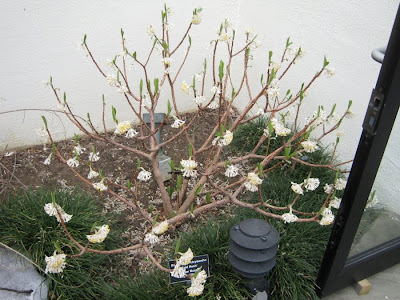

* photo taken on 4th of July 2010 @ U.S. National Arboretum, D.C.

* photos taken on October 17 2010 @ U.S. National Arboretum, D.C.


* photos taken on Aug 25 2011 @ Scott Arboretum, Swarthmore College, PA


* photos taken on Mar 8 2013 @ Brookside Gardens, Wheaton, MD


Bhutan Gold
Reaches up to 10 feet.
Gold Rush
Larger than average flowers.
* photos taken on June 23 2013 @ U.S. National Arboretum, DC


Red Dragon
Red flowers
Snow Cream
Averaging double the growth rate of other clones, reaching up to 10 x 8 feet but otherwise similar in appearance.
Hardy north to zone 7. Originating at Plant Delights.